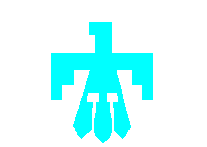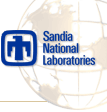 |
SANDIA HISTORY PROGRAM
NEWSLETTER |
 |
Unlimited Distribution
Sand96-1931 |
|
July 1996 |
TONOPAH TEST RANGE HISTORY PUBLISHED


Tonopah Test Range: Outpost of Sandia
National Laboratories (SAND96-0375) relates historical
highlights of this unique facility in the Nevada desert.
Established in 1957 by Sandia Corporation, Tonopah Test
Range (TTR) provided an isolated location for the AEC to
test ballistics and nonnuclear features of atomic weapons.
TTR has served this and related purposes well for nearly
40 years, contributing immeasurably to a peaceful conclusion
to the long arms race remembered as the Cold War.
Sandia’s Los Lunas, Salton Sea, Kauai, and
Edgewood testing ranges also receive abridged mention. Although
Sandia’s test ranges are the subject, the central focus
is on the people who managed and operated them. Comments
from historical figures are interspersed throughout the
narrative to establish this perspective, and at the end,
a few observations on the range’s future are offered.
The report was written by Leland Johnson,
former Sandia Corporate Historian. It is on sale at the
National Atomic Museum for $15.75.

NEWS FROM CORPORATE ARCHIVES
New collections received by Corporate Archives
include documentation and photos on the Kauai Test Field
received from Harold Rarrick (retired). Other new collections
include records relating to research and testing of carbon-carbon
nosetips for reentry vehicles and records on the early
oil shale program (extraction of oil from underground
shale) donated by Dave Northrop (6112). Carl S. Smith
(2783) shared information on several interesting projects
including the laser fusion chamber (an early attempt to
achieve nuclear fusion by zapping fuel pellets with laser
energy), and the neutron radiography chamber (part of
the Annular Core Research Reactor Facility). Keith Mead
(retired) donated information on materials testing. These
and other collections help to make the Corporate Archives
an information center for Sandia’s history. Please review
the 15102 Home Page for more information on the Corporate
Archives and call Myra O’Canna, Archive Coordinator, at
844-6315 if you have any questions.

NEW PHOTO EXHIBIT

Kathy Wallis (left) and Yolanda
Mattison admire the new photo exhibit, “We Crash,
Burn, and Crush: Transportation Technology at Sandia,
1978 - 1996," at the Credit Union on Juan Tabo at
Candelaria. |
"We Crash, Burn, and Crush: Transportation
Technology Programs at Sandia, 1978 - 1996" is the
new photographic exhibit prepared by the History
Program. It can be viewed in the lobby of Building
894 opposite Room 111G and at the Credit Union at
Juan Tabo and Candelaria.
Beginning with the spectacular full-scale
crash tests in 1978, which included a locomotive
hurtling at 80 mph into a tactor-trailer carrying
a spent-fuel cask adn a tractor-trailer crashing
into a concrete barrier also at 80 mph, among other
high-profile tests, Sandia has been in the forefront
of cask desing, testing, and certification for the
safe transportation of radioactive and toxic materials.
This exhibit gives an overview of
the Transportation group's various cask, container,
and package designs for a variety of specialized
uses. It will be on display until August 31. |

HISTORY STAFF TO PRESENT PAPERS IN LONDON, SAN DIEGO
Research Historian Rebecca Ullrich will be
presenting "Engineering Manhattan Style: Sandia Laboratories
as an Example of Postwar Engineering" at the Society for
the History of Technology meeting in London on August 1,
1996. Using Sandia’s work on the seismic sensors developed
for use in Vietnam as a case study, the paper places the
Labs’ work in the larger context of American engineering
since World War II.
Also in August, Myra O’Canna, Archive Coordinator,
will present a paper titled "Thar’s Gold in Them Thar Notebooks:
Benefits of Laboratory Notebooks in the Government Archive"
to the Society of American Archivists in San Diego. The
paper provides insight into the exceptional information
value (i.e., the "gold") of laboratory notebooks and the
essential role that notebooks play in documenting Sandia’s
history and technological innovations.

Recorded Information Management Department 15102
Mail Stop 0612
Fax: 844-2621
Manager: Anna Nusbaum, 845-9440, e-mail: awnusba@sandia.gov
Corporate Historian: Carl J. Mora, 844-8011, e-mail: cjmora@sandia.gov
Corporate Archivist: Myra O'Canna, 844-6315, e-mail: mlocann@sandia.gov
Research Historian: Rebecca Ullrich, 844-1483, e-mail: raullri@sandia.gov
 Sandia
History Program & Corporate Archives
Sandia
History Program & Corporate Archives




